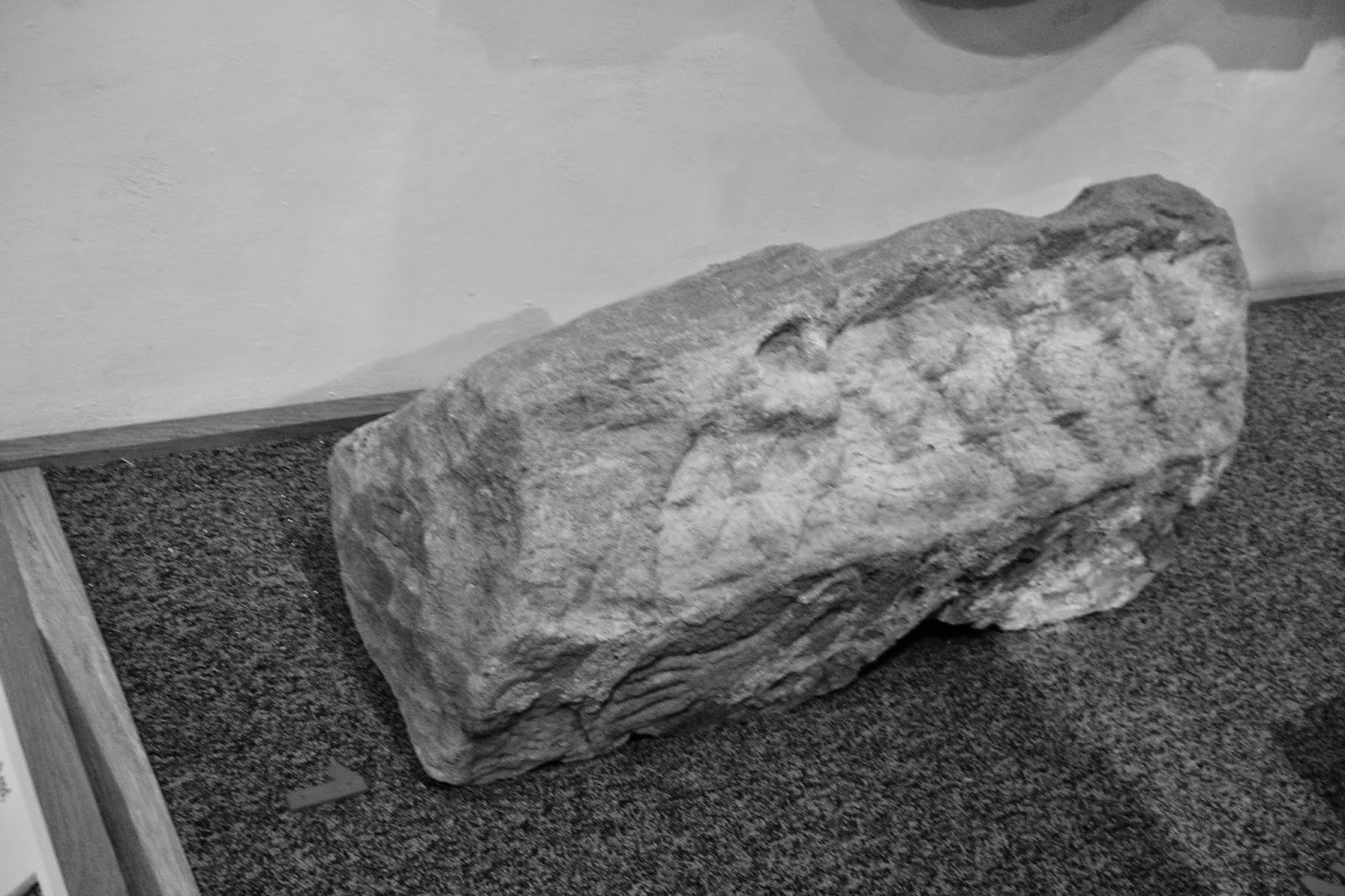Brompton Church, North Yorks; Viking Hogback Graves; 10th to 12th century Anglo-Scandinavian Grid Reference: SE37379635
 |
| © Copyright Bob Embleton and licensed for reuse under this Creative Commons Licence. |
Beautiful clear images of these 'Berseckers' graves. The bears at either end allude to the Viking habit of going mad in battle some put it down to the amanita muscaria, that lovely red mushroom, with white spots, of course a halluncinogen. Or maybe the wearing of bearskins But what cannot be denied is the beautiful interlaced carving, and the 'roof tiles' of the house. Six were found in the 19th century, some going to Durham Cathedral at the time, three seem to be whole the rest in fragments.
The Dragon Stone Levisham Church Just two broken halves of stone, difficult to see the 'dragon', but I realise that I should start drawing again, just like Wiltshire Wanderings. Levisham is a village between Pickering and Whitby, Levisham is the village before you take a sudden nose dive down the ravine into the village of Lockton, which also has a ruined church at the end.
Which brings me to St.Oswald at Lythe, just outside Sandsend. This church has of course many stones, again playing round my photos which were not too good, the first shows a reconstruction of a typical 10th century Anglo-Scandinavian cemetery. Though the illustrator has only shown the 'house' types and no ' gripping bears' at the end, though there seems to be two lions eating a man.
 |
| This looks like a badly eroded hogback , with maybe a clutching bear... |






Fascinating photograpns and information as usual Thelma.
ReplyDeleteIt is extraordinary how the 'immigrants', whether from the stone age, right through with the Romans, Gauls, Saxons, Vikings or the Normans gave to this country in their craftwork and vitality. Farage eat your heart out ;)
DeleteBears?! Now you're just showing off :) Those are amazing. Modern gravestones should definitely be as imaginative.
ReplyDeleteHi Rhiannon, the East coast is an exciting place to explore, and the Northern invasions brought not only a language but very beautiful stuff. It was you, years and years ago, sending me the Saxon charter of the boundaries round Weston that sparked my interest. As I walked the streams, springs and barrow boundaries, these interlopers slowly took form....
DeleteWell fancy that. I'm glad I was of some use!
DeleteI can't think of which stone it is, but one of the Pictish motifs shows a person being eaten - I think it's one of the Meigle stones, with a fierce beastie eating a prone man. On the Papil Stone (Shetland) are two bird-headed men with long beacks and bird legs but human bodies and arms (holding axes) with a man's head suspended between the ends of the two beaks. Weird. There will be an obvious message in these pictures as they were in place of writing for the illiterate populace.
ReplyDeleteWhat always outstands me with these pictorial stories Jennie, is that it took such a long time to chisel the story into the stone. Must admit the Picts have eluded me as far as their stones are concerned, must read up on them...
ReplyDeleteI have never seen these before. Thank you.
ReplyDeleteThe joy of blogging, at least for oneself Tom, is that the stuff the brain collects over the years can be recorded.
DeleteHow amazing! My plan is to have my ashes put in a hole and a lilac bush plopped atop them to mark the spot. No stone. However, I never considered the fact that I could have bears!
ReplyDeleteThat's interesting to think that the markers were so designed for an illiterate people, for story telling purposes.
"markers were so designed for an illiterate people, for story telling purposes." That is how you should interpret the paintings on the wall and the terrible gargoyles in our churches, they were just telling stories. Whether it was about martyred saints or the evils of hell Debby.
Delete